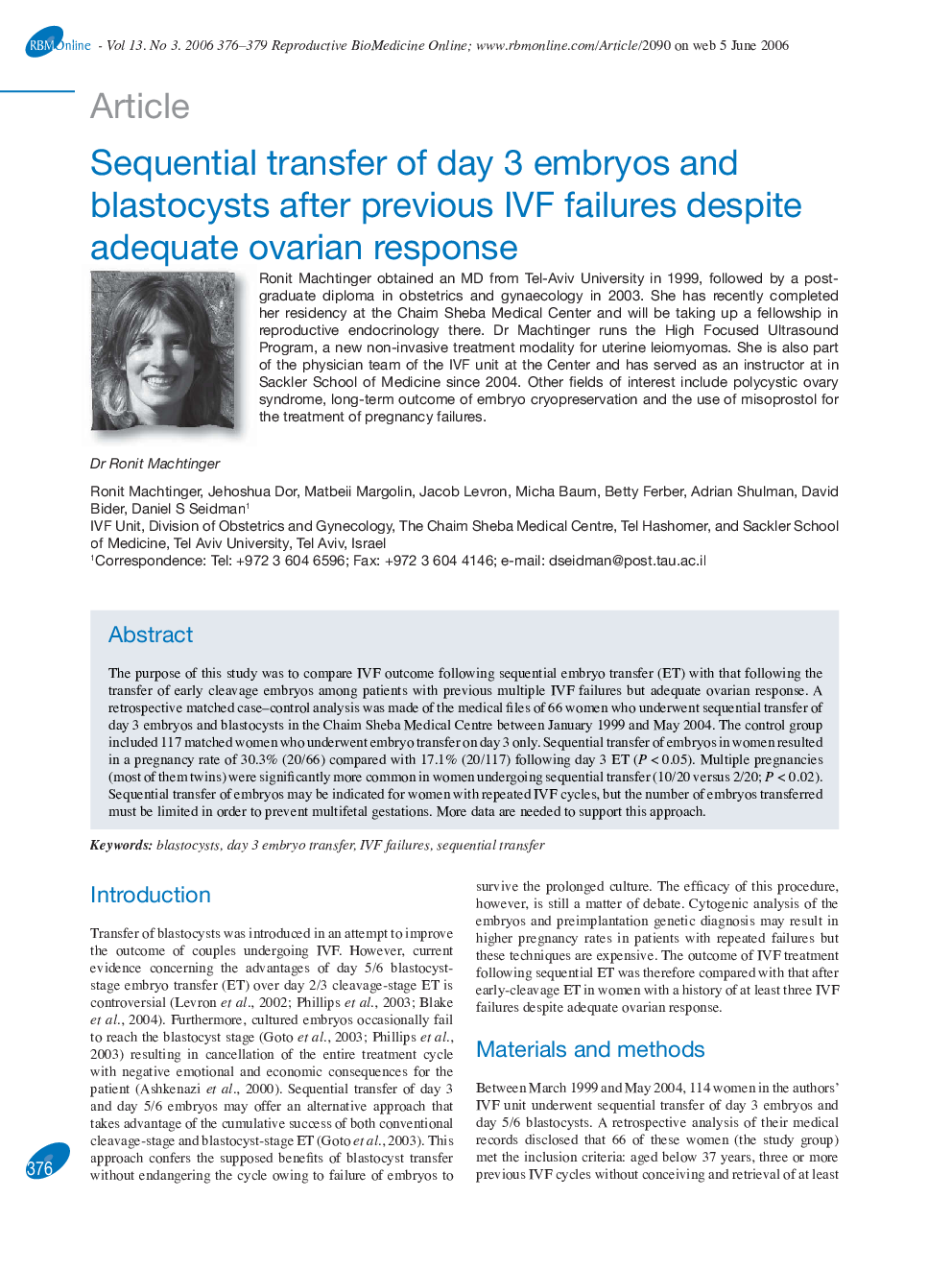| Article ID | Journal | Published Year | Pages | File Type |
|---|---|---|---|---|
| 3971884 | Reproductive BioMedicine Online | 2006 | 4 Pages |
The purpose of this study was to compare IVF outcome following sequential embryo transfer (ET) with that following the transfer of early cleavage embryos among patients with previous multiple IVF failures but adequate ovarian response. A retrospective matched case–control analysis was made of the medical files of 66 women who underwent sequential transfer of day 3 embryos and blastocysts in the Chaim Sheba Medical Centre between January 1999 and May 2004. The control group included 117 matched women who underwent embryo transfer on day 3 only. Sequential transfer of embryos in women resulted in a pregnancy rate of 30.3% (20/66) compared with 17.1% (20/117) following day 3 ET (P < 0.05). Multiple pregnancies (most of them twins) were significantly more common in women undergoing sequential transfer (10/20 versus 2/20; P < 0.02). Sequential transfer of embryos may be indicated for women with repeated IVF cycles, but the number of embryos transferred must be limited in order to prevent multifetal gestations. More data are needed to support this approach.
